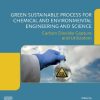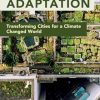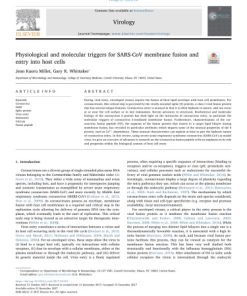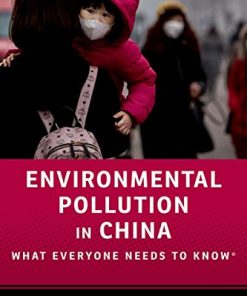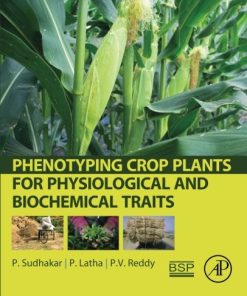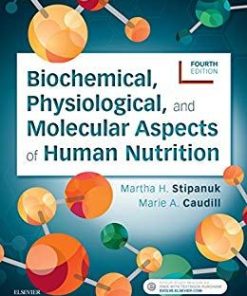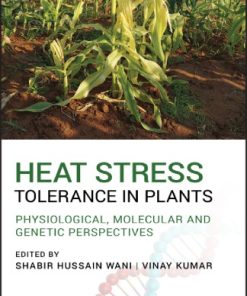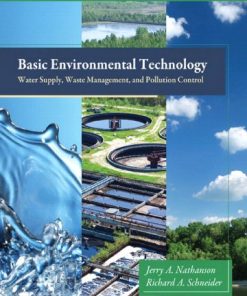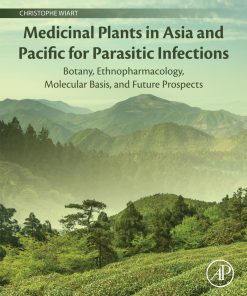Plants and their Interaction to Environmental Pollution Damage Detection Adaptation Tolerance Physiological and Molecular Responses 1st edition by Azamal Husen 0323983099 9780323983099
$50.00 Original price was: $50.00.$25.00Current price is: $25.00.
Plants and their Interaction to Environmental Pollution: Damage Detection, Adaptation, Tolerance, Physiological and Molecular Responses 1st edition by Azamal Husen – Ebook PDF Instant Download/DeliveryISBN: 0323983099, 9780323983099
Full download Plants and their Interaction to Environmental Pollution: Damage Detection, Adaptation, Tolerance, Physiological and Molecular Responses 1st edition after payment.
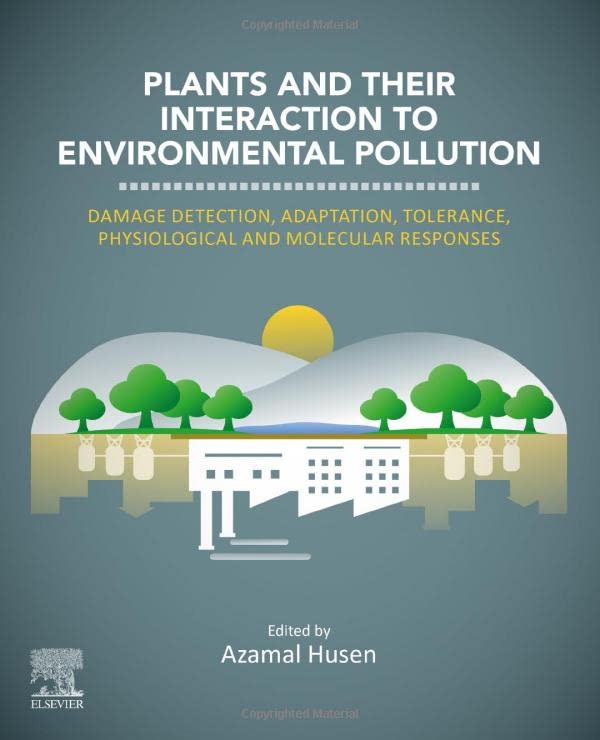
Product details:
ISBN-10 : 0323983099
ISBN-13 : 9780323983099
Author : Azamal Husen
Environmental pollution as a consequence of diverse human activities has become a global concern. Urbanization, mining, industrial revolution, burning of fossil fuels/firewood and poor agricultural practices, in addition to improper dumping of waste products, are largely responsible for the undesirable change in the environment composition. Environmental pollution is mainly classified as air pollution, water pollution, land pollution, noise pollution, thermal pollution, light pollution, and plastic pollution. Nowadays, it has been realized that with the increasing environmental pollution, impurities may accumulate in plants, which are required for basic human uses such as for food, clothing, medicine, and so on. Environmental pollution has tremendous impacts on phenological events, structural patterns, physiological phenomena, biochemical status, and the cellular and molecular features of plants. Exposure to environmental pollution induces acute or chronic injury depending on the pollutant concentration, exposure duration, season and plant species. Moreover, the global rise of greenhouse gases such as carbon monoxide, carbon dioxide, nitrous oxides, methane, chlorofluorocarbons and ozone in the atmosphere is among the major threats to the biodiversity. They have also shown visible impacts on life cycles and distribution of various plant species. Anthropogenic activities, including the fossil-fuel combustion in particular, are responsible for steady increases in the atmospheric greenhouse gases concentrations. This phenomenon accelerates the global heating. Studies have suggested that the changes in carbon dioxide concentrations, rainfall and temperature have greatly influenced the plant physiological and metabolic activities including the formation of biologically active ingredients. Taken together, plants interact with pollutants, and cause adverse ecological and economic outcomes. Therefore, plant response to pollutants requires more investigation in terms of damage detection, adaptation, tolerance, and the physiological and molecular responses.
Plants and their Interaction to Environmental Pollution: Damage Detection, Adaptation, Tolerance, Physiological and Molecular Responses 1st Table of contents:
Chapter 1: Plants and their unexpected response to environmental pollution: An overview
Abstract
1: Introduction
2: Plant response to air pollution
3: Plant response to photochemical oxidants
4: Plant response to light pollution
5: Plant response to soil pollution
6: Plant response to water pollution
7: Plant response to noise pollution
8: Plant response to nanoparticles
9: Conclusion
References
Chapter 2: Effect of UV-B radiation on plants growth, active constituents, and productivity
Abstract
1: Introduction
2: Physiological reactions of plants in response to UV-B-radiation
3: UV-B signaling in the plant
4: Plants protection mechanisms from the negative effects of UV-B
5: Applications of UV-B radiation in practice
6: Conclusion
References
Further reading
Chapter 3: Effect of elevated CO2on plant growth, active constituents, and production
Abstract
1: Introduction
2: Current status of CO2and historical perspectives
3: Effect of high CO2on plant growth
4: Effect on the production of active constituents
5: Deleterious effect of alleviated CO2on the plant architecture
6: Conclusion
References
Chapter 4: Effect of elevated O3on plants growth, active constituents, and production
Abstract
1: Introduction
2: Chemistry of tropospheric O3formation
3: Mechanisms by which O3damages plant tissue
4: Volatile organic compounds (VOCs)
5: Toxicology of plants
6: The effects of ozone on plants
7: Measurements of ozone-induced changes
8: Visible injury and physiological effects
9: Effects on plant growth
10: Biochemical effects of O3
11: Productivity measurements
12: The impact on crops and trees
13: Ozone and reactive oxygen species
14: Ozone as a disinfectant for the surface
15: ROS and plant cell metabolism
16: Conclusion
References
Chapter 5: Plants response to SO2or acid deposition
Abstract
1: Introduction
2: Plant and SO2or acid rain
3: Plants response to SO2or acid deposition
4: Plants develops their defense system
5: Conclusion
References
Chapter 6: Fly ash toxicity, concerned issues and possible impacts on plant health and production
Abstract
1: Introduction
2: Fly ash composition
3: Causes of fly ash toxicity
4: Impact of fly ash on crop health and productivity
5: Effects of heavy metals on plant metabolism and physiology
6: Conclusion
References
Chapter 7: Effect of coal-smoke pollution on plants growth, metabolism and production
Abstract
1: Introduction
2: Principal phytotoxic gases of coal burning and their impact on flora
3: Other gases/release of coal burning and their impact on vegetation of the world
4: Conclusion
References
Chapter 8: Effect of heavy metals on growth, physiological and biochemical responses of plants
Abstract
1: Introduction
2: Effect of heavy metal pollution on plants
3: Cadmium (Cd)
4: Lead (Pb)
5: Arsenic (As)
6: Mercury (Hg)
7: Metal stress tolerance mechanisms in plants
8: Conclusion
References
Chapter 9: Interaction of nanoparticles and nanocomposite with plant and environment
Abstract
Acknowledgment
1: Introduction
2: Sources of nanomaterials
3: Classification of nanoparticles
4: Organization of nanomaterials based on their sizes
5: Types of nanomaterials based on their source
6: Types of nanoparticles related to plants
7: Cerium NPs (CeO NPs)
8: Silicon NPs (SiNPs)
9: Titanium dioxide NPs (TiO2NPs)
10: Nano pesticides
11: Nanoemulsion
12: Interaction of NMs with soil and rhizosphere
13: Interaction of NMs with overall environment
14: Factors influencing the uptake and translocation of NPs
15: NPs for plant pathogen detection
16: Transport and interaction
17: Nanoparticle-plant interaction pathways
18: Effects of ion-releasing NP
19: Impact of natural organic material on NP-induced effects
20: Concluding remarks
References
Chapter 10: Toxic effects of essential metals on plants: From damage to adaptation responses
Abstract
1: Introduction
2: Metal toxicity in plants
3: Metal toxicity and its damage detection
4: Repair strategies and plant response
5: Adaptation responses
6: Conclusion
References
Chapter 11: Phytoremediation strategies of plants: Challenges and opportunities
Abstract
1: Introduction
2: Mechanism of heavy metal remediation
3: Phytoremediation of contaminated soil to grow food
4: Phytoremediation for bioenergy production
5: Valorization of phytoremediation by-products
6: Challenges associated with phytoremediation
7: Conclusion and future perspective
References
Chapter 12: Pesticide toxicity and their impact on plant growth, active constituents and productivity
Abstract
1: Introduction
2: Phytotoxicity effects on plants
3: Pesticides phytotoxicity symptoms on plants
4: Impact of pesticide toxicity on soil health and plant
5: Other measures for the prevention of pesticides phytotoxicity
6: Conclusion
References
Chapter 13: Plant responses to water pollution
Abstract
1: Introduction
2: Water pollution: Definition, types, and extent of the problem
3: Plant and water pollution
4: Concluding remarks
References
Further reading
Chapter 14: Plant response to industrial waste
Abstract
1: Introduction
2: Types of plants
3: Response of plant to industrial waste
4: Conclusion
References
Chapter 15: Radioisotopes and their impact on plants
Abstract
1: Introduction to radioisotopes
2: Radioisotopes as pollutants
3: Effects of radiation on plant diversity
4: Effects of radiation in plant morphology
5: Effects of radiation in plant physiology and molecular biology
6: Radio-adaptation by plants
7: Use of radioisotopes in crop improvement: A positive side
8: Conclusion
References
Chapter 16: Effects of cell phone radiation on plants growth, active constituents and production
Abstract
1: Introduction
2: Plants and cell phone radiation or GSM radiation
3: Effects of cell phone radiation on plant system
4: Conclusion
References
Chapter 17: Effects of major munitions compounds on plant health and function
Abstract
1: Warfare and the environment
2: Global munitions issue
3: Chemical relics of war
4: Environmental behavior
5: Explosives and vegetation
6: Monitoring going forward
References
Further reading
Chapter 18: Aquatic macrophytes and trace elements: Deleterious effects, biomarkers, adaptation mechanisms, and potential new wave of phytoremediation processes
Abstract
1: Introduction
2: Trace elements and aquatic plants or macrophytes
3: Biomarkers and adaptation mechanisms of macrophytes
4: Macrophytes: A potential new wave of phytoremediation processes
5: Conclusion
References
Chapter 19: Production and role of plants secondary metabolites under various environmental pollution
Abstract
1: Introduction
2: Effect of elevated CO2(EC) levels on PSMs
3: Effect of ozone (O3) on PSMs
4: Effect of toxic gases on the production of PSMs
5: Effect of heavy metals on PSMs
6: Effect of particulate matter (PM) on PSMs
7: Conclusion
References
Chapter 20: Plant proteomics and environmental pollution
Abstract
1: Introduction
2: Approaches and challenges in crop plant proteomics
3: Plant proteomic technologies—Recent innovations and their applications
4: Cellular proteome to subcellular protein catalogues
5: Organ-specific proteome analysis of plants in concern to environmental pollutants
6: Conclusion
References
Chapter 21: Genetic modification and genome engineering of plants for adverse environmental pollution
Abstract
1: Introduction
2: Current scenario of globe and human towards pollution
3: Pollution: Effects on plants
4: Engineering plants
5: Conclusion and future prospects
People also search for Plants and their Interaction to Environmental Pollution: Damage Detection, Adaptation, Tolerance, Physiological and Molecular Responses 1st:
causes of environmental pollution
types of environmental pollution
effects of environmental pollution
essay on environmental pollution in 250 words
short essay on environmental pollution
Tags: Plants, their Interaction, Environmental Pollution, Damage Detection, Adaptation, Tolerance, Physiological, Molecular Responses, Azamal Husen
You may also like…
Politics & Philosophy
Environmental Pollution in China: What Everyone Needs to Know 1st Edition Daniel K. Gardner
Biology and other natural sciences - Plants: Agriculture and Forestry
Phenotyping crop plants for physiological and biochemical traits 1st Edition Latha
Uncategorized
(eTextbook PDF) for Biochemical, Physiological, and Molecular Aspects of Human Nutrition 4th Edition
Medicine & Health Science
Biochemical, Physiological, and Molecular Aspects of Human Nutrition E Book 3rd Edition, (Ebook PDF)
Biology and other natural sciences - Plants: Agriculture and Forestry
Heat stress tolerance in plants: physiological, molecular and genetic perspectives 1st Edition Kumar


